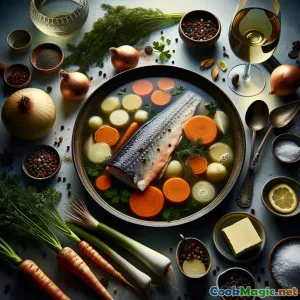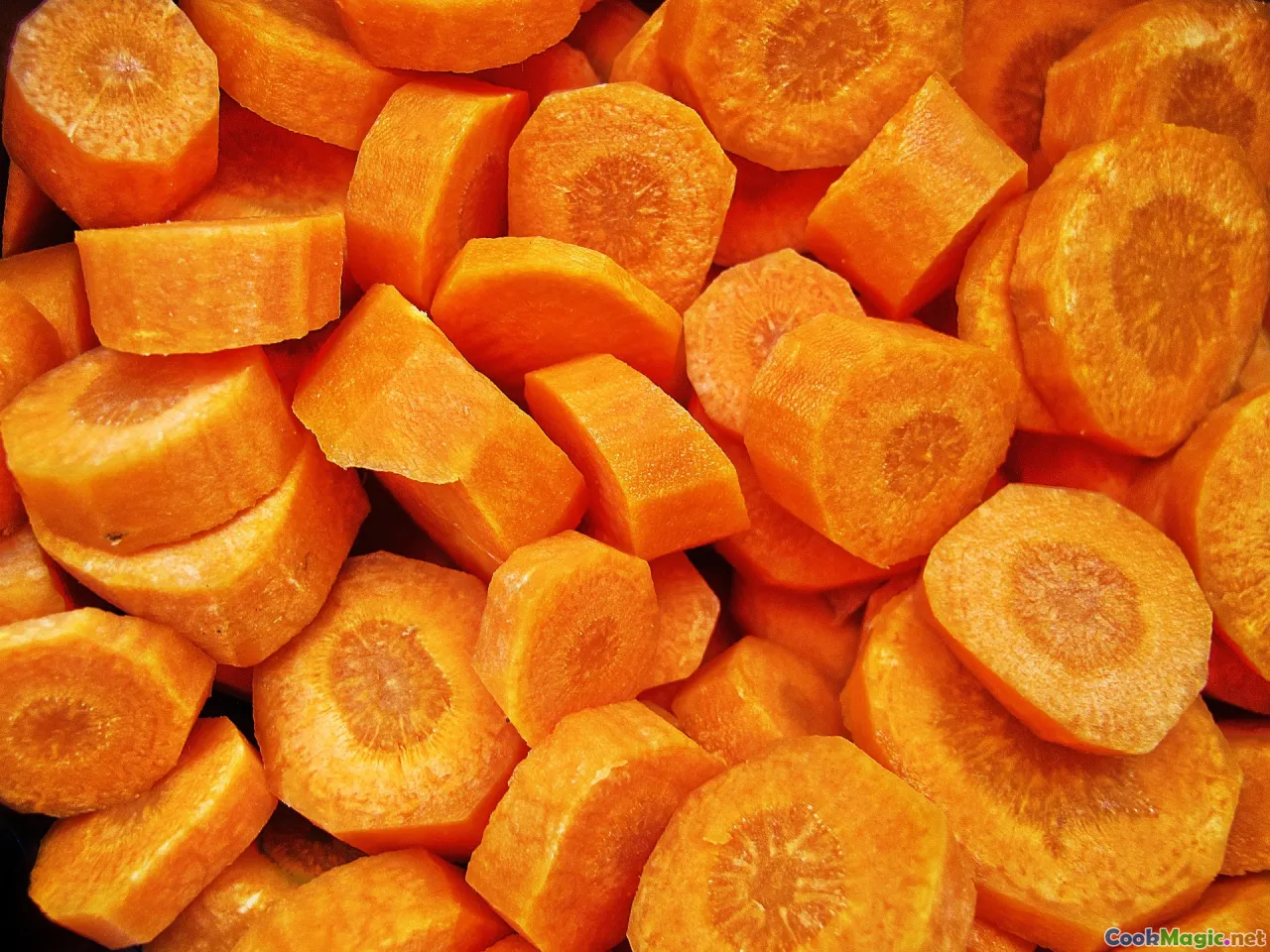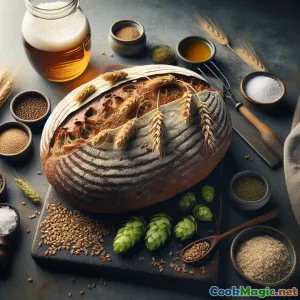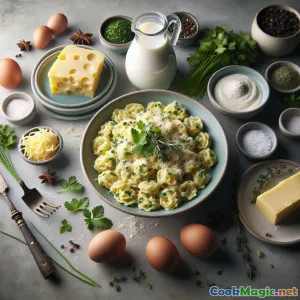
Rustige Bayerische Char-Brühe mit Winterwurzeln
(Rustic Bavarian Char Broth with Winter Roots)
(0 Bewertungen)0
1,233
Juli 15, 2025
Problem melden
Zutaten
-
500 grams Arktischer Saibling Filets
(Hautloses, knochenloses Fleisch, in 3cm große Würfel geschnitten)
-
2 medium Karotte
(Geschält und gewürfelt)
-
2 medium Pastinake
(Geschält und gewürfelt)
-
1/2 medium Sellerie (Selleriewurzel)
(Gewürfelt)
-
1 large Lauch
(Gereinigt und dünn geschnitten)
-
2 small Kartoffel
(Wachstyp, geschält und gewürfelt)
-
1 medium Zwiebel
(Fein gehackt)
-
100 ml trockener Weißwein
(Optional für mehr Geschmacksintensität)
-
1 liter Fischfond
(Idealerweise hausgemacht oder natriumarm)
-
2 tbsp Frische Petersilie
(Fein gehackt, zum Garnieren)
-
1 whole Lorbeerblatt
-
3 whole Wacholderbeeren
(Leicht zerdrückt)
-
5 whole Ganze schwarze Pfefferkörner
-
2 tbsp Butter
(zum Anbraten von Gemüse)
-
1 tsp Zitronenschale
(Frisch gerieben)
-
to taste Meersalz
-
to taste Frisch gemahlener schwarzer Pfeffer
(Hautloses, knochenloses Fleisch, in 3cm große Würfel geschnitten)
(Geschält und gewürfelt)
(Geschält und gewürfelt)
(Gewürfelt)
(Gereinigt und dünn geschnitten)
(Wachstyp, geschält und gewürfelt)
(Fein gehackt)
(Optional für mehr Geschmacksintensität)
(Idealerweise hausgemacht oder natriumarm)
(Fein gehackt, zum Garnieren)
(Leicht zerdrückt)
(zum Anbraten von Gemüse)
(Frisch gerieben)
Nährwerte
- Portionen: 4
- Portionsgröße: 1 Schüssel (300ml)
- Calories: 310 kcal
- Carbohydrates: 0 g
- Protein: 27 g
- Fat: 10 g
- Fiber: 5 g
- Sugar: 7 g
- Sodium: 760 mg
- Cholesterol: 55 mg
- Calcium: 72 mg
- Iron: 1.8 mg
Anweisungen
-
1 - Gemüse und Fisch vorbereiten:
Karotten, Pastinaken, Sellerie und Kartoffeln in kleine, gleich große Würfel schneiden. Lauch in Scheiben schneiden und Zwiebel fein hacken. Arctic Char Filets in 3 cm große Würfel schneiden und trocken tupfen. beiseite stellen.
-
2 - Aromaten Anbraten:
In einem großen Dutch Oven oder Suppentopf die Butter bei mittlerer Hitze schmelzen. Zwiebeln und Lauch hinzufügen; sautieren, bis sie durchsichtig sind, aber nicht braun werden. Karotten, Pastinaken, Sellerie und Kartoffeln einrühren. Weitere 5 Minuten sautieren.
-
3 - Ablöschen und Würzen:
Wein (falls gewünscht) einfüllen und mit einem Holzlöffel die braunen Reste vom Boden abkratzen. Den Wein 2 Minuten einkochen lassen. Lorbeerblatt, zerdrückte Wacholderbeeren (falls verwendet) und Pfefferkörner hinzufügen.
-
4 - Die Brühe köcheln lassen:
Fügen Sie die Fischbrühe hinzu. Zum leichter Siedepunkt bringen, dann auf eine leicht köchelnde Temperatur reduzieren. Kochen Sie, halb bedeckt, 20–25 Minuten oder bis die Wurzelgemüse zart sind.
-
5 - Arktischen Saibling pochieren:
Fügen Sie die Arctic Char Würfel vorsichtig in die siedenede Brühe. Garen Sie sie sanft für 5–6 Minuten, bis der Fisch gerade durchgegart ist und leicht zerfällt, aber noch feucht ist.
-
6 - Fertigstellen und Servieren:
Lorbeerblatt und Wacholderbeeren entfernen. Brühe mit Salz und frisch gemahlenem schwarzem Pfeffer nach Geschmack würzen. Brühe und Fisch in Schalen anrichten. Mit frischer Petersilie und Zitronenschale garnieren, kurz vor dem Servieren.
Karotten, Pastinaken, Sellerie und Kartoffeln in kleine, gleich große Würfel schneiden. Lauch in Scheiben schneiden und Zwiebel fein hacken. Arctic Char Filets in 3 cm große Würfel schneiden und trocken tupfen. beiseite stellen.
In einem großen Dutch Oven oder Suppentopf die Butter bei mittlerer Hitze schmelzen. Zwiebeln und Lauch hinzufügen; sautieren, bis sie durchsichtig sind, aber nicht braun werden. Karotten, Pastinaken, Sellerie und Kartoffeln einrühren. Weitere 5 Minuten sautieren.
Wein (falls gewünscht) einfüllen und mit einem Holzlöffel die braunen Reste vom Boden abkratzen. Den Wein 2 Minuten einkochen lassen. Lorbeerblatt, zerdrückte Wacholderbeeren (falls verwendet) und Pfefferkörner hinzufügen.
Fügen Sie die Fischbrühe hinzu. Zum leichter Siedepunkt bringen, dann auf eine leicht köchelnde Temperatur reduzieren. Kochen Sie, halb bedeckt, 20–25 Minuten oder bis die Wurzelgemüse zart sind.
Fügen Sie die Arctic Char Würfel vorsichtig in die siedenede Brühe. Garen Sie sie sanft für 5–6 Minuten, bis der Fisch gerade durchgegart ist und leicht zerfällt, aber noch feucht ist.
Lorbeerblatt und Wacholderbeeren entfernen. Brühe mit Salz und frisch gemahlenem schwarzem Pfeffer nach Geschmack würzen. Brühe und Fisch in Schalen anrichten. Mit frischer Petersilie und Zitronenschale garnieren, kurz vor dem Servieren.
Mehr über: Rustige Bayerische Char-Brühe mit Winterwurzeln
Bavarian Char Broth with Root Vegetables: Story, Culture & Chef’s Notes
Bavaria—the emblem of southern Germany—may be best known for its breezy mountain landscapes, hearty Oktoberfest fare, and world-class breads. Yet, Bavaria is also a region where crystal-clear lakes meet alpine agriculture, inspiring some of Europe’s most honest, earthy soups. Among them, fish broths hold a timeless place, linking local fishmongers, mountain farmers, and village cooks who invented ways to elevate humble roots and lakeside bounty. Bavarian Char Broth with Root Vegetables seeks to channel those farmhouse traditions in a bowl.
History and Cultural Significance
The concept of turning lake fish into broth hails from rural necessity. In lakeshores like Chiemsee, char, trout, and pike were caught early and often. Root vegetables, perfectly suited for Bavaria's cool climate and rocky soil, could be stored through harsh winters. Home cooks developed broths to capture the essence of both—meals that were nourishing and restorative through winter, but elegant enough for a Sunday table.
While char is most notably fished in the icy lakes of the Alps, it has become symbolic of regional pride. The aromatic root blend mirrors the age-old customs that honored subtle sweetness and gentle earthiness. Traditionally, such broths ("Fischsuppe" or more specifically, "Saiblingseintopf" for char) were communal, served to warm hands and spirits alike.
Unique Aspects and Personal Chef Insights
• Char Flavor: Arctic char brings a luxurious, buttery flavor somewhere between trout and salmon, but a leaner texture and delicate flake ideal for broths—it never overpowers the roots and aromatics. • Root-Rich Base: Carrots, parsnips, celeriac, and potato create natural sweetness and depth, while leek and onion add a savory foundation. Celeriac in particular is a regional favorite, giving an unmistakable "Old World" note. • Juniper, Bay, and Wine Touches: A whisper of crushed juniper and dry white wine (a nod to the region's vineyards and forests) weaves complexity without crowding the palate. • Lemon Zest & Parsley: These finishing touches, though seemingly simple, are traditional methods to freshen up the deep flavors just before serving. They add brightness—and a hint of spring even in mid-winter.
Cooking Tips & Best Practices
- Stock Selection: Choose a high-quality, gently seasoned fish stock—homemade is best. A splash of white wine helps break up any fishiness, integrating earthier vegetable flavors flatly and evenly. Vegetable or chicken stock can substitute if needed.
- Poaching Fish: Bring the broth temperature down before poaching the char to ensure the cubes stay succulent and tender. Overcooking will lead to flakiness rather than pleasant firmness.
- Serving Variation: This soup craves a hunk of rustic rye or sourdough bread, and traditionalists might also stir in a handful of fresh garden herbs in the final moments for even more color.
Personal Reflection
As a chef, I find rich nostalgia in recipes like this. You can taste the careful stewardship—nothing wasted, everything celebrated. Today, this Bavarian Char Broth invites us to simmer down and prioritize soulful, wholesome food. The broth’s savory complexity and sparkling fresh finish, paired with the comforting weight of root vegetables, represent both togetherness and tenacity found in Alpine communities. It's an ideal winter lunch, first course, or a light but hearty weekend dinner, particularly when snow lines the trees outside your kitchen window.
Conclusion: Why You Should Try It
Bavarian Char Broth with Root Vegetables is equal parts historical homage and cozy, modern comfort. Every element—fish, root, leaf—contributes symbiotically to something both satisfying and refined. Let this hearty recipe become a new favorite on brisk days, whenever you crave both warmth and a taste of Europe’s lakeside heritage.

























